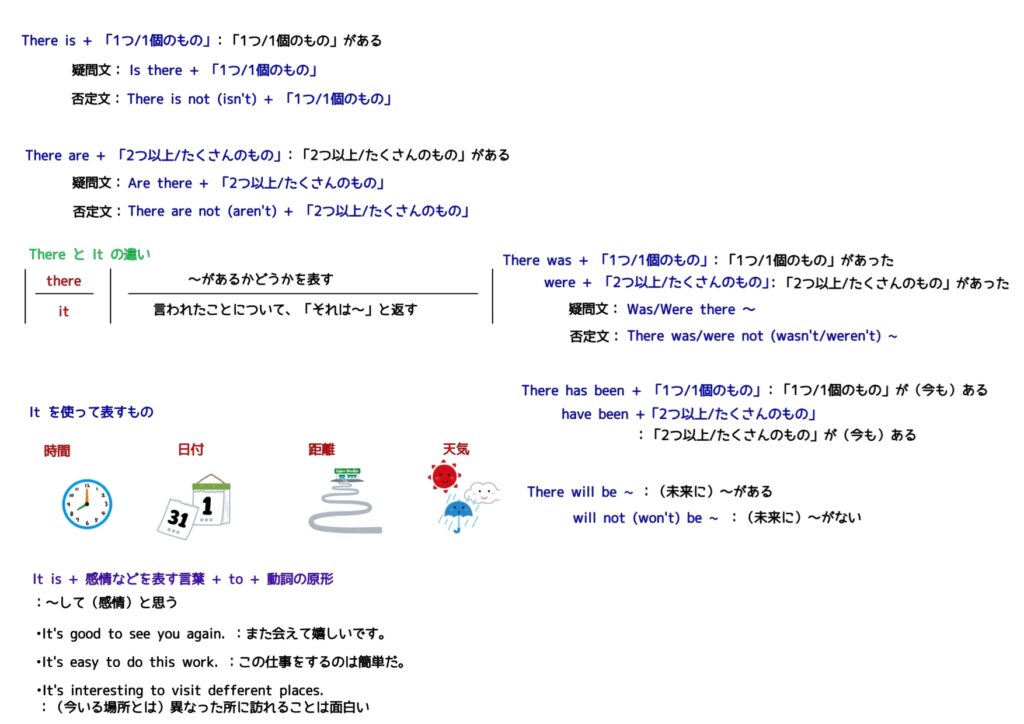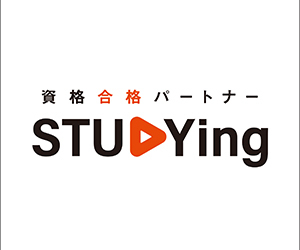第97回:目的語の位置で「it」を使う時。

「There」と「It」の違いも含めて確認してみましょう。
Q. この記事で、一番大事なことって何?
A. 大事なことを、1枚の画像にまとめました。

いちいちノートにまとめるのが面倒だという方、また、
ノートにまとめることが苦手だという方は、ご活用ください。

[広告]
確かな英語力は、日々の継続から。
その継続を後押しする、第二言語習得理論に基づいた
オンライン英語学習プログラムがあります。
英語を使う人のための、確実なスキルアップが望める
7日間の無料体験はこちらから!

“It”の使い方: that節への言及と特定の表現の使用”
英語では、文中の節の内容を指し示すために、述語の目的語として「it」を使うことがあります。また、特定の表現においても「it」を活用することがあります。
セクション1: 「it + 動詞 + that-clause」の形
- 「it + 動詞 + that-clause」の形は、特定の動詞の後に直接続くことがあります。
- 「it」は後続のthat-, if-またはwhen-clauseを指し示す役割を果たします。
セクション2: 「it + 動詞 + to-infinitive」の形
- 「it + 動詞 + to-infinitive」の形もよく使われます。
- 特定の動詞と組み合わせて使用することができます。
セクション3: 特定の動詞と「it」の組み合わせ
- 特定の動詞においては、「it」を使うこともありますが、それ以外の動詞では使用しません。
セクション4: 「it + 前置詞 + noun / adjective + clause」の形
- accept、regard、see、take、またはviewの後には、「it + as + noun (またはadjective) + clause」の形を使います。
セクション5: 「It is / was no…」と「There is / was no…」の表現
- 特定の表現においては、「It is / was no…」または「There is / was no…」の形を使用します。
- それぞれの表現には、特定のニュアンスや意味があります。
具体例
- It can be followed directly by a that-clause after “can’t bear,” “hate,” “like,” “love,” “resent,” and “can’t stand.”
Example: I can’t stand it when people chew loudly.
Example: She hates it that he always arrives late.
- It is followed first by an adjective or noun phrase and then a that-clause, to-infinitive clause, or clause beginning with “when” with verbs like “believe,” “consider,” “feel,” “find,” and “think.”
Example: They consider it important to maintain good communication.
Example: I find it amazing how fast time flies.
- It can be used with the verb “leave” followed by “it” and “to somebody + to-infinitive.”
Example: Don’t worry, I’ll leave it to you to handle the presentation.
Example: She owes it to herself to pursue her dreams.
- It is used with verbs like “accept,” “regard,” “see,” “take,” or “view” followed by “it + as + noun (or adjective) + clause.”
Example: We see it as a sign of progress that more people are embracing renewable energy.
Example: He regards it as his duty to help those in need.
- There are common expressions with “It is/was no…” and “There is/was no…” to indicate absence, negation, or lack.
Example: It’s no secret that she’s been planning a surprise party for him.
Example: There’s no denying that technology has revolutionized our lives.
Example: There’s no need to worry; everything will be fine.
Please note that these examples are fictional.
[広告]
TOEICのスコアを上げたいけれど、
まとまった勉強時間が取れなくて困っている…
なら、細かいスキマの時間を使いながら、
少しずつスキルを積み重ねてみてはどうでしょう。
スマホ1つでスコアアップが出来る、
オンライン講座のリンクはこちらから。

Q. この文法はどうやって使うのでしょうか?
A. 今回の文法を活用した会話文を見てみましょう。

I can’t stand it when people chew with their mouths open. It’s so rude.
(口を開けて噛む人を見ると、本当に我慢できないんだよね。とても失礼だから。)

Oh, I completely agree. It’s no fun having to sit next to someone like that during a meal.
(ああ、まったく同感だよ。食事中にそんな人の隣に座るのは楽しくないよね。)

And it’s no use telling them to stop. They never seem to understand how unpleasant it is.
(それに、彼らに止めるように言っても無駄だよね。どうやら嫌な思いをさせていることが理解できないみたいだよ。)

That’s true. It’s no surprise that it bothers so many people. It’s a basic etiquette everyone should know.
(その通りだね。多くの人を悩ませるのも驚きじゃないよ。それは基本的なエチケットだから、みんな知っているべきことだし。)
[広告]
ロゼッタストーン・ラーニングセンターで、最先端の教育制度を活用して英語を学びませんか?私たちは個々の学習ペースに合わせてeラーニングと対面教育を組み合わせ、柔軟な学習環境を提供しています。自宅でのeラーニングと対面教育のメリットを最大限に活かし、あなたの英語学習をサポートします。最新のテクノロジーと個別の指導が組み合わさった当センターで、自由な学習スタイルを体験してみませんか?英語学習を楽しく効果的に進めるための環境がここにあります。新たな一歩を踏み出して、新しい英語学習の旅に参加しましょう!

Q. この記事の要点は?
A. 「it」を目的語で使う時の確認をしました。
- “It” can be used as the object of a verb, referring forward to a clause.
- Some verbs can be followed by “it” and a that-clause, while others can be followed directly by a that-clause without “it.”
- Verbs indicating perception or interpretation can be followed by “it” + adjective/noun + clause.
- Expressions with “It is/was no…” and “There is/was no…” are commonly used.
- “It’s no secret/surprise/use/coincidence/longer/necessity/point/question/reason/chance/hope/denying/alternative/choice” are common expressions.
- Sentences with “It is/was no…” can have alternatives with the clause placed at the front, while sentences with “There is/was no…” do not have the same flexibility.
英会話を始めてみたいけれど、どのサービスが良いか分からない…
そんな方は、まず、この記事で3つのサービスを比べてみてはいかがでしょうか?
英語力を効率良く伸ばすことができるサービス3選です。

次回の文法解説は?
「it」を使った節・「what」を使った節
この記事を作る際に参考にした文法の解説書になります。
すべて英語で書かれていますが、練習問題が付いてます。
イギリス英語なので、スペル等の表記が異なる部分もありますが、
「使い方を練習したい」「繰り返し問題を解きたい」
という方は、使ってみても良いかもしれません。

関連記事一覧
他の文法解説記事を検索できます。




-320x180.jpg)
-320x180.jpg)



-120x68.jpg)

コメント